Papers by Martin Daughtry
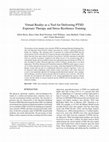
Military Behavioral Health, 2013
The incidence of post-traumatic stress disorder (PTSD) in returning Operation Enduring Freedom an... more The incidence of post-traumatic stress disorder (PTSD) in returning Operation Enduring Freedom and Operation Iraqi Freedom military personnel has created a significant behavioral health care challenge. One emerging form of treatment for combat-related PTSD that has shown promise involves the delivery of exposure therapy using immersive virtual reality (VR). Initial outcomes from open clinical trials have been positive, and fully randomized controlled trials are currently in progress. Inspired by the initial success of our research using VR to emotionally engage and successfully treat persons undergoing exposure therapy for PTSD, we have developed a similar VR-based approach to deliver resilience training prior to an initial deployment. The STress Resilience In Virtual Environments (STRIVE) project aims to create a set of combat simulations (derived from our existing virtual Iraq/Afghanistan PTSD exposure therapy system) that are part of a multiepisode interactive narrative experience. Users can be immersed within challenging virtual combat contexts and interact with virtual characters as part of an experiential approach for learning psychoeducational material, stress management techniques, emotional coping strategies believed to enhance stress resilience. This article describes the development and evaluation of the virtual Iraq/Afghanistan exposure therapy system and then details its current transition into the STRIVE tool for predeployment stress resilience training.
This handbook is currently in development, with individual articles publishing online in advance ... more This handbook is currently in development, with individual articles publishing online in advance of print publication. At this time, we cannot add information about unpublished articles in this handbook, however the table of contents will continue to grow as additional articles pass through the review process and are added to the site. Please note that the online publication date for this handbook is the date that the first article in the title was published online. For more information, please read the site FAQs.
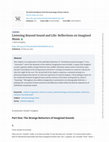
The Oxford Handbook of the Phenomenology of Music Cultures, 2021
This chapter is an exploration of the embodied experience of “involuntary musical imagery” (a.k... more This chapter is an exploration of the embodied experience of “involuntary musical imagery” (a.k.a. “earworms”) and of the dynamics of the auditory imagination more broadly. It argues that imagined sounds regularly exhibit strange behaviors that audible vibrations cannot achieve and draws upon Husserl’s description of the living present and Sartre’s writing on intuition to construct a theory for why this might be the case. The second half of the chapter comprises a sustained attempt at a phenomenological description of a discrete experience of musical imagery. A brief epilogue muses on the similarities between imagined music and the memory of the dead, casting both as a kind of “haunting.” Throughout, the auditory imagination is presented as an ethnographic field site: a palimpsestic ecosystem of interconnection and difference within which the discrete experiences of individuals and groups matter.

Russian Literature, 2010
The sonorous presence of a voice intoning a poem triggers a number of experiential transformation... more The sonorous presence of a voice intoning a poem triggers a number of experiential transformations, the most obvious being that the reader is turned into a listener, who cedes control of the temporality in which the poem is experienced. Another consequential effect of the aural experience of poetry is a reduction of the text's inherent polysemy, as the elements of prosody conspire to produce a sonorous "reading" that is necessarily an interpretation. At the same time, the voice that sounds the poem creates new, vocal polysemies, new problems for interpretation. In this article, I attempt to track some of the transformations that occur when the works of Boris Ryzhii, a poet to whom sincerity has frequently been ascribed, are given as vocal performances. How do we hear the "sincere authorial voice" of Ryzhii when his works are not read but spoken-or, more radically, when they are not spoken but sung?

Journal of the American Musicological Society, 2020
These words, uttered by a mid-twentieth-century radio announcer with all the lurid intonation of ... more These words, uttered by a mid-twentieth-century radio announcer with all the lurid intonation of a film noir gumshoe, open each of the ten episodes of the podcast ESC: Sonic Adventure in the Anthropocene, an arresting work of open-access audio scholarship made available by the University of Michigan Press in collaboration with the Fulcrum digital platform. 1 No sooner is this golden-age-of-radio vibe established, however, than a series of voices from twenty-first-century newscasts dispel it with a barrage of apocalyptic taglines: "Climate change. .. Toxic algae. .. The endangered reef. .. Global warming. .. Mass extinctions. .. Ominous implications." The original radio orchestra cross-fades into a jangly acoustic guitar strumming the opening measures of a present-day, ersatz remix of Mussorgsky's Night on Bald Mountain. And then a new voice appears. Unlike the first voice, this one is earnest, close-miked, contemporary. It announces, "This is E-S-C," each letter receiving a different speed of reverb. The voice belongs to Jacob Smith, a professor in Northwestern University's Department of Radio/Television/Film and the project's author and narrator. (This opening may be heard in audio example 1 in the online version of the Journal.) Over the course of ESC 's roughly seven-hour run, the listener gets to know Smith's voice as well as a student in one of his lecture classes would. Or perhaps even better: character blooms like a hothouse flower in the acousmatic chamber of the podcast. After listening to the series, you may hear your anxious late-night inner monologue about climate change or coronavirus enunciated in Smith's distinctively mild-mannered tenor. Like all good openings, this one embodies the mood and compositional principles of the work it introduces. The environmental anxiety that is central to ESC 's anthropocenic theme is audible here, as is Smith's intellectual engagement with questions of sound, representation, genre, technology, 1. Fulcrum "addresses the needs of scholarly authors who wish to link source materials to book-length interpretations of them in an integrated way": "About," Fulcrum, https://www .fulcrum.org/about/. Unless otherwise noted, the links cited in this review were accessed on April 21, 2020. The announcer's voice sounds like that of radio and television actor William Conrad, the best-known host of Escape. The famously chameleonic voice actor Paul Frees was also a host, however, so it is difficult to state definitively whether we are listening to Conrad or to Frees imitating Conrad.
Theory for Ethnomusicology
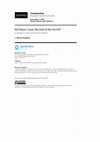
Transposition, Mar 15, 2020
Transposition for their support throughout the writing and publication process. Special acknowled... more Transposition for their support throughout the writing and publication process. Special acknowledgment goes to the musical voices that populate this essay: first and foremost, Yōsuke Yamashita, but also Kiyoshi Awazu, Cole Porter, Ella Fitzgerald, and the many music practitioners and communities mentioned within these pages. The footnotes and list of works cited form a partial acknowledgment of the many scholars I'm grateful to be in conversation with. Given the expansive scope of the essay's theme, it also seems appropriate to acknowledge my debts to the mindbogglingly diverse collection of creatures, plants, habitats, machines, and other enigmatic entities that exist within the most anthropocentric and essentializing of all terms: "nonhuman." "We need to understand the body, not as an organism or entity in itself, but as a system, or series of open-ended systems, functioning within other huge systems it cannot control through which it can access and acquire its abilities and Did Music Cause the End of the World?
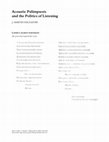
Music and Politics, 2014
1 This article had an unusually long gestation, and has benefited from many readers over the year... more 1 This article had an unusually long gestation, and has benefited from many readers over the years. I am grateful to Deborah Kapchan for encouraging me to write it and patiently reading through several revisions. I would also like to thank the Walters Art Museum; Patricia Hall, the readers, and Edmond Johnson at Music and Politics; Emily Daughtry; and the organizers and participants in a series of "Theorizing Sound Writing" events at NYU and the Society for Ethnomusicology in 2008 and 2009. Particular thanks go to Piotr Trubetskoi and Igor' Belyi for their work as archivists and scholars of music on bones. My most emphatic thanks go to Iurii Kirsanov, and to the Iraq and Afghan war veterans whose perspectives inform this article. Any light shed on the layeredness of listening is our corporate achievement. All of the article's deficiencies, however, are my own.
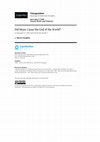
Transposition
Transposition for their support throughout the writing and publication process. Special acknowled... more Transposition for their support throughout the writing and publication process. Special acknowledgment goes to the musical voices that populate this essay: first and foremost, Yōsuke Yamashita, but also Kiyoshi Awazu, Cole Porter, Ella Fitzgerald, and the many music practitioners and communities mentioned within these pages. The footnotes and list of works cited form a partial acknowledgment of the many scholars I'm grateful to be in conversation with. Given the expansive scope of the essay's theme, it also seems appropriate to acknowledge my debts to the mindbogglingly diverse collection of creatures, plants, habitats, machines, and other enigmatic entities that exist within the most anthropocentric and essentializing of all terms: "nonhuman." "We need to understand the body, not as an organism or entity in itself, but as a system, or series of open-ended systems, functioning within other huge systems it cannot control through which it can access and acquire its abilities and Did Music Cause the End of the World?
Twentieth-Century Music, 2016

Russian Literature, 2010
The sonorous presence of a voice intoning a poem triggers a number of experiential transformation... more The sonorous presence of a voice intoning a poem triggers a number of experiential transformations, the most obvious being that the reader is turned into a listener, who cedes control of the temporality in which the poem is experienced. Another consequential effect of the aural experience of poetry is a reduction of the text's inherent polysemy, as the elements of prosody conspire to produce a sonorous "reading" that is necessarily an interpretation. At the same time, the voice that sounds the poem creates new, vocal polysemies, new problems for interpretation. In this article, I attempt to track some of the transformations that occur when the works of Boris Ryzhii, a poet to whom sincerity has frequently been ascribed, are given as vocal performances. How do we hear the "sincere authorial voice" of Ryzhii when his works are not read but spoken-or, more radically, when they are not spoken but sung?
Sound, Music, Trauma, and Survival in Wartime Iraq, 2015
Sound, Music, Trauma, and Survival in Wartime Iraq, 2015
Sound, Music, Trauma, and Survival in Wartime Iraq, 2015
Sound, Music, Trauma, and Survival in Wartime Iraq, 2015
Sound, Music, Trauma, and Survival in Wartime Iraq, 2015
Sound, Music, Trauma, and Survival in Wartime Iraq, 2015
Uploads
Papers by Martin Daughtry